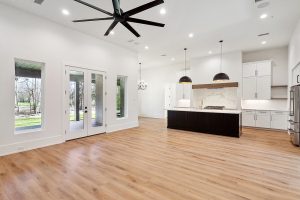Navigating the Spectrum: Selecting the Perfect Exterior House Colors
Choosing the right colors for your home’s exterior can be an overwhelming task given the vast array of options available. However, making the right choice is crucial, not just for aesthetic appeal but also for ensuring the longevity of your satisfaction with the result, and potentially influencing future resale value.
One fundamental strategy is to consider the broader context of your neighborhood. Observing the color schemes of surrounding homes can guide you toward choices that complement the collective landscape without sacrificing your personal style. Striking the right balance between standing out and blending in is key.
The architectural style and era of your home play pivotal roles in color selection. Historical accuracy in color can enhance the architectural features of your home and pay homage to its origins. For instance, a Victorian-era home might embrace bold contrasts, while a mid-century modern home could favor a more subdued palette. Paint manufacturers often provide collections tailored to specific architectural styles, offering a useful starting point for your color journey.
Another critical aspect is the immutable features of your home, such as roofing, stonework, and driveways. These elements should inform your color choices, ensuring that your selections harmonize with these permanent fixtures rather than clash with them.
Drawing inspiration from the surrounding natural environment can also guide your color choices. Whether it’s the lush greens of a wooded landscape or the muted tones of a beachfront setting, nature can provide a palette that enhances the natural beauty of your location.
The impact of light and dark colors on perception and aesthetics cannot be overstated. Lighter colors tend to make structures appear larger and more inviting, while darker shades can provide a sense of drama and sophistication but may make a home seem smaller. Understanding this dynamic can help in deciding how to balance light and dark tones on your home’s exterior.
Finally, selecting a cohesive color family can create a harmonious and pleasing aesthetic. Choosing related shades for different parts of your home, such as the main body, trim, and accents, can produce a unified appearance. Contrast, when used judiciously, can add interest and character but should be employed carefully to avoid a chaotic look.
Ultimately, the right exterior color scheme not only makes your home a visual delight but also reflects your style and complements its natural and architectural surroundings. With thoughtful consideration and a keen eye for detail, you can select a color palette that makes your home a cherished and standout presence in your neighborhood.









